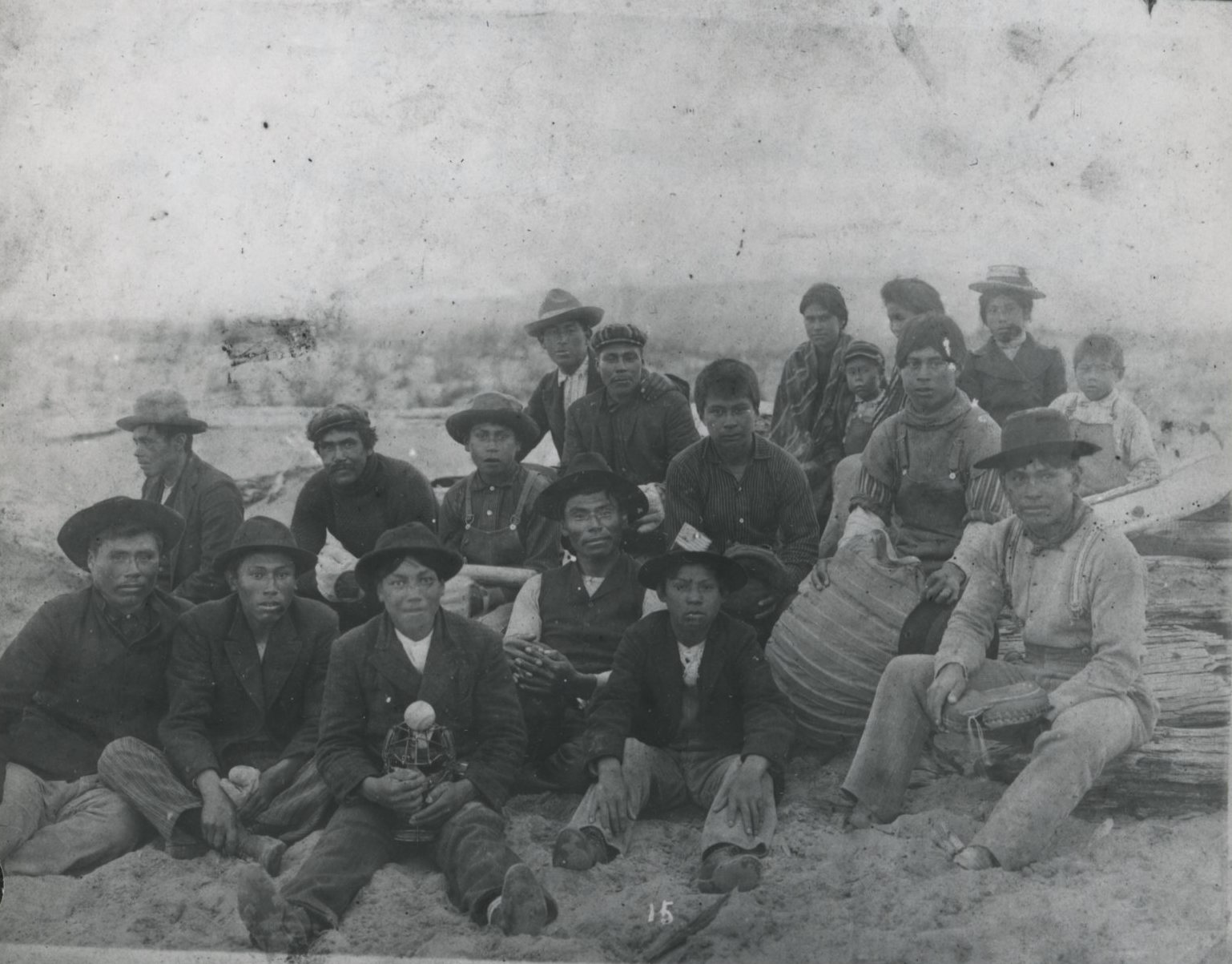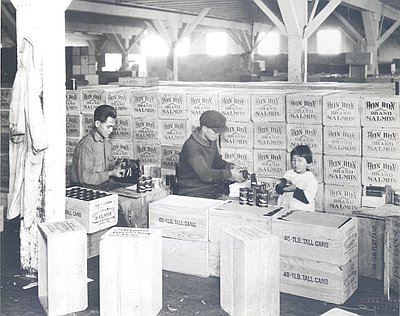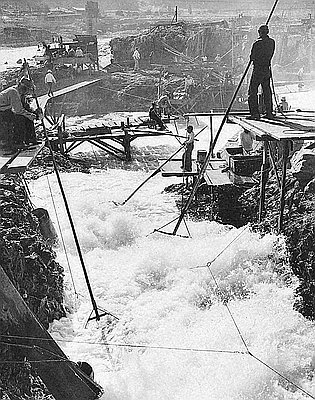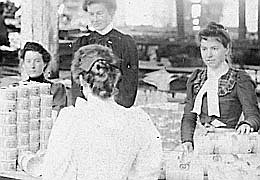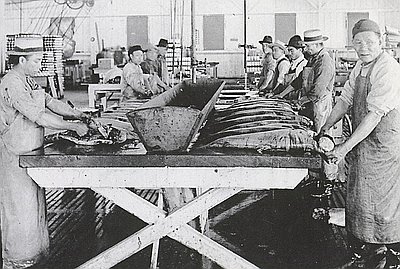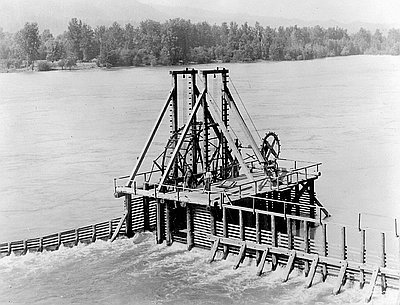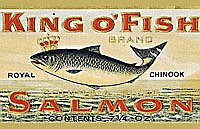What Is Different about Native American Fishers?
It is astonishing the number of salmon which ascend the Columbia yearly and the quantity taken by the Indians....The Indians are quite expert in taking them.—Elkanah Walker to Rev. David Greene, 1839
In a photograph of Chief George Charley’s seining crew, taken at the turn of the twentieth century, Chinook men pose in sand and driftwood. They hold the trappings of an American form of entertainment: a baseball, a catcher's mask, and leather mitts. At first glance, the photograph could be of any ethnic group enjoying a pastime of their adopted country, but a closer look reveals a woman in the background, a blanket draped over her shoulders and a small boy appears to be wearing braids.
The photograph points to some important characteristics about the Native commercial fishery in Oregon in the nineteenth and early twentieth centuries, which had roots in ancient practices while also reflecting a modern regional economy. The work of the seining crew was both traditional and new. Chinook Indians had harvested fish from the ocean for thousands of years, and fish such as salmon provided sustenance and was an item that could be traded throughout the region. The gear that Chief George Charley and his crew used consisted of nonindigenous materials like cotton, and they likely sold their harvest to a mostly non-Native market, but the activity of fishing connected these men to the work of their ancestors.
A full examination of commercial fishers on the Columbia River requires historians to consider the overlapping worlds of Indian and non-Indian fishers. Native fishers shared some commonalities with non-Native fishers: they employed sophisticated, environmentally specific technology to harvest fish, they regulated access to the resource, and they fished for a sizable commercial market. There were significant differences as well: the Native fishery predates the non-Native commercial fishery, salmon were not simply a resource but played a role in Native religious and ceremonial practices, and many tribal people reserved rights to the fishery through treaties.
The primary source documents provided in this section present only part of the story of the region’s Native fishery. To round out an examination of the role of the fishery in Columbia River Indian communities, you would also have to consider oral tradition, oral histories, treaty texts, court cases, and archeological evidence. This essay explores what set the Native fishery apart from the non-Native commercial fishery without losing focus on the ways Native fishers accommodated new economic, political, and cultural realities. While the Native fishery was vast and diverse, this essay concentrates on the salmon fishery.
© Katrine Barber, 2007. Updated and revised by OHP staff, 2014.
